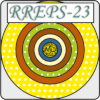Conveners
X–ray and neutron scattering in crystals
- Sultan Dabagov (INFN Laboratori di Frascati)
X–ray and neutron scattering in crystals
- Artak Mkrchyan (Institute of Applied Problems of Physics (IAPP) NAS RA)
Our scientific group based on the Laboratory of X-ray Methods of Analysis and Synchrotron Radiation of FSRC “Crystallography and Photonics” RAS specializes in the research of crystalline materials under external influences of various nature and their combinations: constant, alternating and pulsed electric and magnetic fields, laser illumination and heating, mechanical and ultrasonic...
Crystalline materials are a key element of the modern microelectronics industry. Often, elements and devices manufactured on their basis operate under conditions of external influences that have a significant impact on their functional characteristics, up to complete failure. Therefore, one of the urgent problems of modern materials science is the study of the structure evolution of promising...
Analytical solutions are constructed for the wave functions of diffracted X-ray and slow neutron waves in crystals with a lattice deformation field. An integral form is formulated for determining the quasi-amplitudes of diffracted waves in the framework of the initial spatially inhomogeneous beams, based on the constructed functions of the influence of a point source of X-ray and neutron...
In this report the influence of the magnetic domain structure and the effects of surface magnetism on the perfection of crystalline materials and their diffraction characteristics will be discussed. The canted antiferromagnet FeBO3 was used as a model crystal due to its anomalously strong magnetoelastic interaction.
To carry out the experiments, a synchrotron technique for X-ray diagnostics...
Control of the ordered systems properties can be effectively implemented through deformations formed by various external influences, for example, electric fields, laser radiation or their combination. In a number of cases, crystals are sensitive to both types of influences, which, on the one hand, makes them promising materials within straintronics purposes, and, on the other hand, complicates...
It is assumed to develop new class of XSW methods in the «normal incidence – grazing exit» geometry using optical reciprocity principle. The complex structure of the fluorescent signal, measured in grazing angles (an analogue of the Kossel effect), will be used for determination of the atoms distribution profiles in layered systems or atomic positions in the crystal lattice, receiving...
The paper presents a new method for revealing the fine structure of defocusing patterns that appear in three-block interferometers and the results of the corresponding studies. Three-unit defocused interferometers without a thick analyzer block, with a thick analyzer block and with a separate thick block (enlarger) are designed, manufactured and tested. It is shown that fine structures of...
